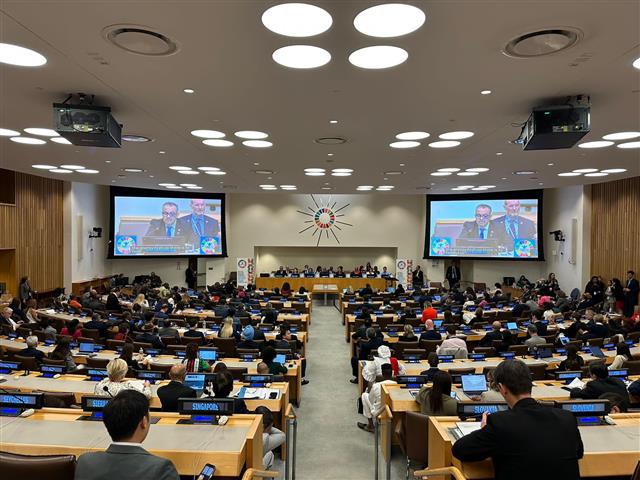The targets include reaching 90% of people with TB prevention and care services, using a WHO-recommended rapid test as the first method of diagnosing TB; providing social benefit packages to all people with TB; licensing at least one new TB vaccine; and closing funding gaps for TB implementation and research by 2027.
“For millennia, our ancestors have suffered and died with tuberculosis, without knowing what it was, what caused it, or how to stop it,” said Dr. Tedros Adhanom Ghebreyesus. “Today, we have knowledge and tools they could only have dreamed of. The political declaration countries approved today, and the targets they have set, are a commitment to use those tools, and develop new ones, to write the final chapter in the story of TB.”
Taking stock of progress towards targets set in 2018 for a five-year period, WHO reported that while global efforts to combat TB have saved over 75 million lives since the year 2000, they fell short of reaching the targets, mainly due to severe disruptions to TB services caused by the Covid-19 pandemic and ongoing conflicts.
Only 34 million people of the intended 40 million people with TB were reached with treatment between 2018 and 2022. For TB preventive treatment, the situation was even more grim, with only 15.5 million of the 30 million people targeted to be reached with preventive treatment accessing it.
Funding for TB services in low- and middle-income countries fell from US$ 6.4 billion in 2018 to US$ 5.8 billion in in 2022, representing a 50% financing gap in implementing the required TB programs. Annual funding for TB research ranged from US$ 0.9 billion to US$ 1.0 billion between 2018 and 2022, which is just half of the target set in 2018.
pll/npg/lpn









